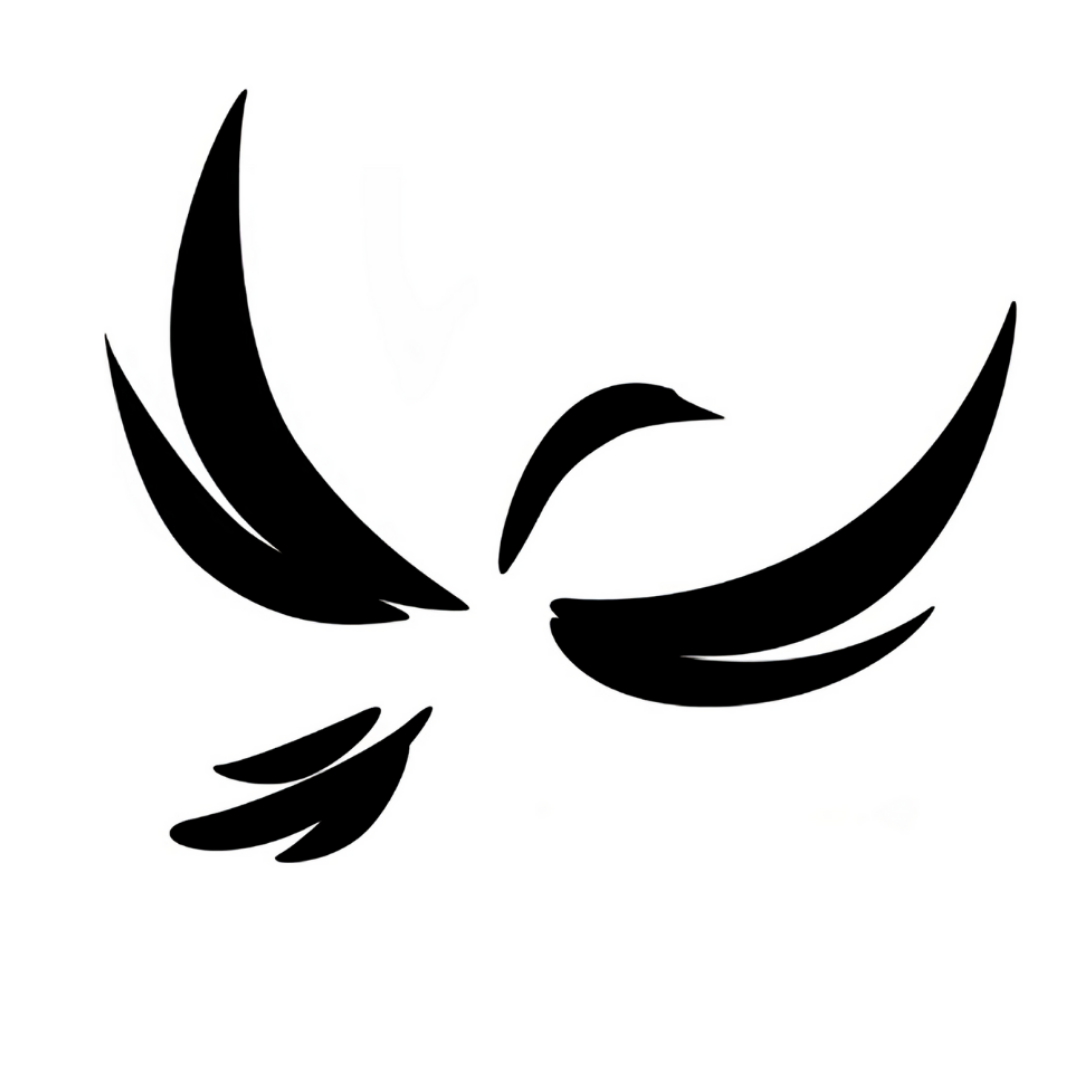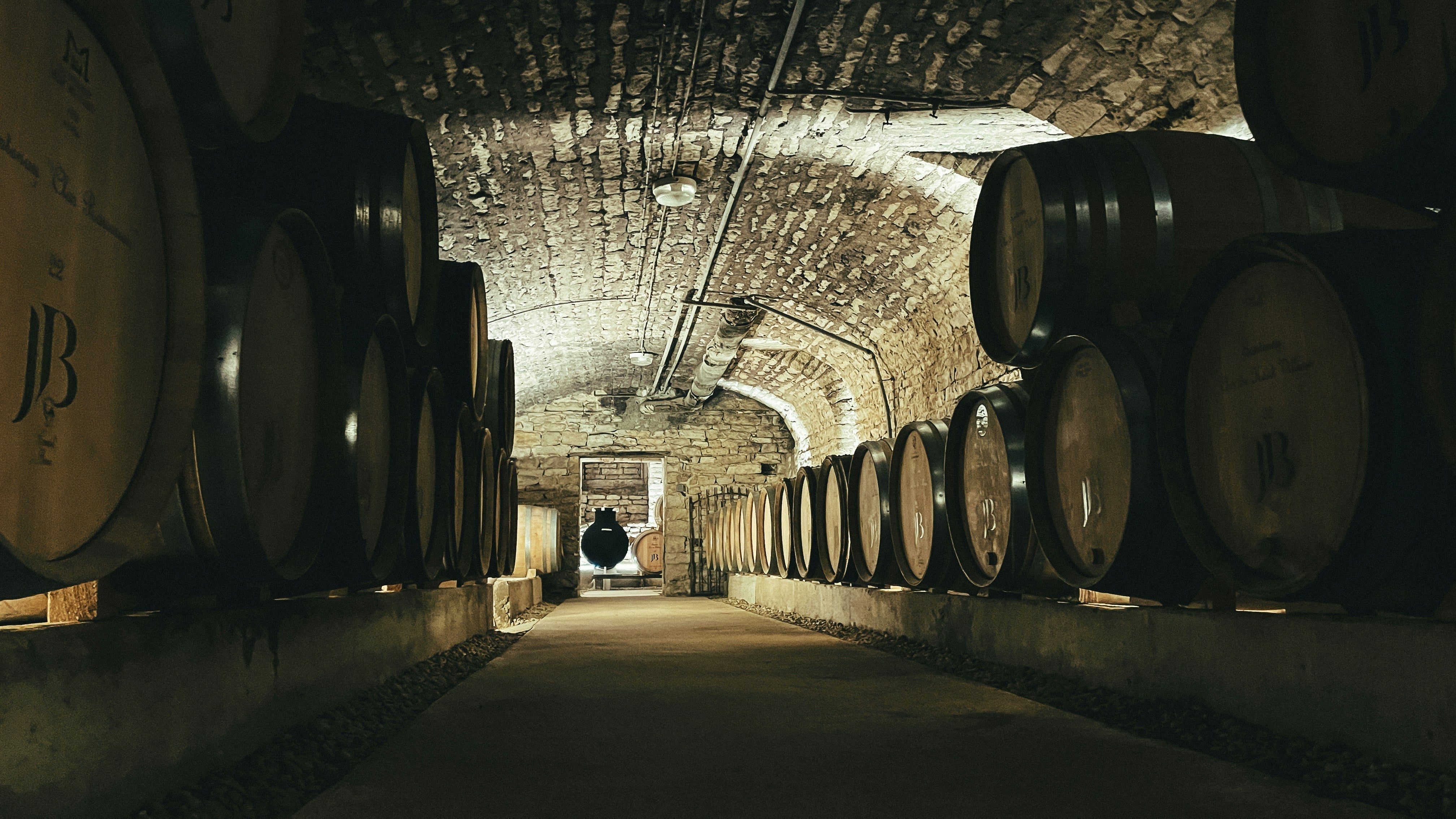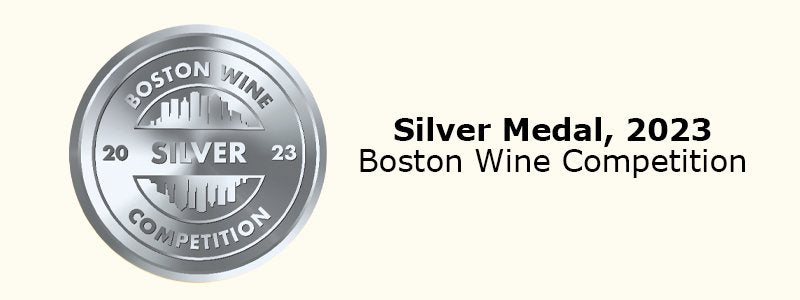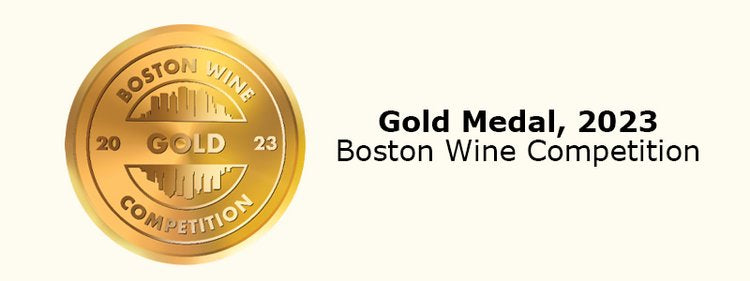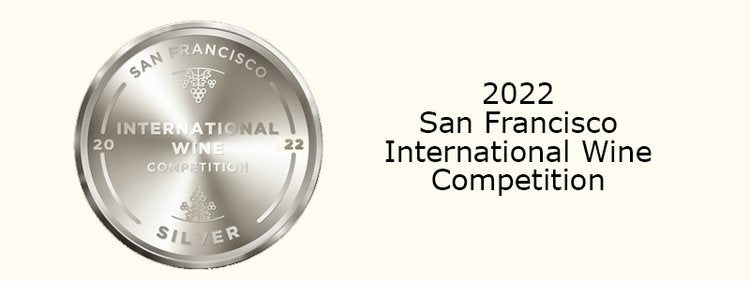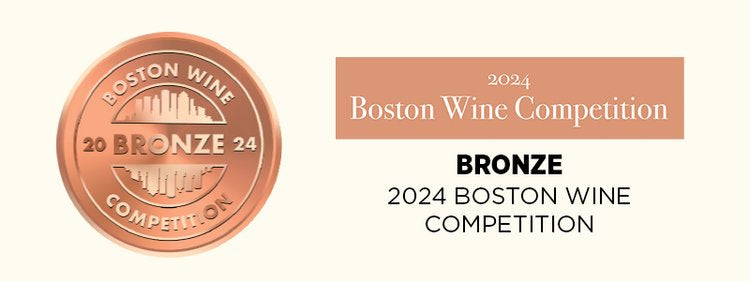Why Vintage Matters in the Wine World
Time in a Bottle.
In a temperature-controlled cellar beneath the cobblestone streets of Beaune, France, Ludivine Griveau, winemaker for Hospices de Beaune, gently pulls a bottle from a dusty rack. The label, yellowed with age, bears a simple date: 1978. "This," she says, cradling the bottle like a fragile artifact, "is more than wine. It is history you can taste."
The concept of vintage—a wine made from grapes harvested in a single specified year—stands as one of the most misunderstood yet profoundly important aspects of oenology. Far beyond a marketing gimmick or collector's obsession, a wine's vintage encapsulates a complex convergence of nature, science, craftsmanship, and time itself. For those willing to look deeper, vintage represents the beautiful unpredictability inherent in agricultural products, a reminder that wine remains fundamentally tied to the land despite all technological advances.
Nature's Signature: How Climate Shapes a Vintage
Each vintage tells the story of a growing season—its triumphs and challenges, its peculiarities and defining moments.
"The vintage is like a fingerprint," explains Gregory Jones, climatologist and wine industry consultant who has spent decades studying the relationship between climate and wine quality. "It represents a unique set of weather conditions that will never be precisely replicated again."
This meteorological narrative begins with winter rainfall that replenishes groundwater supplies, followed by spring temperatures that determine bud break timing and summer heat that drives ripening. The denouement arrives with autumn conditions that can either provide the perfect finale for grape maturation or introduce plot twists like early frost or harvest rains.
In Bordeaux's celebrated 2016 vintage, for instance, a wet spring created disease pressure that required vigilant vineyard management, but this was followed by a gloriously dry summer and ideal harvest conditions. The resulting wines show remarkable freshness balanced with ripe tannins—characteristics directly attributable to that year's specific weather pattern.
Climate change has brought new urgency to vintage discussions. Warming temperatures have fundamentally altered growing seasons across traditional wine regions. In Germany's Mosel Valley, vintners who once struggled to fully ripen grapes now regularly produce wines with higher alcohol levels than their predecessors could have imagined.
"We're not making our grandfather's wines anymore," says Katharina Prüm of Joh. Jos. Prüm estate. "The vintages tell the story of our changing climate more clearly than any scientific paper could."
The Terroir-Vintage Dialogue
While climate provides the yearly script, terroir—that elusive French concept encompassing soil, topography, and microclimate—acts as the stage upon which the vintage drama unfolds. The fascinating interplay between these elements creates the distinctive character of great wine.
"Terroir isn't static; it expresses itself differently each vintage," notes Pedro Parra, a respected terroir consultant known for his soil expertise. "Some vintages reveal certain aspects of terroir while others highlight different characteristics."
This dynamic relationship explains why Burgundy's premier cru vineyards might shine brilliantly in cooler vintages while grand cru sites demonstrate their superiority in warmer years. The limestone-rich soils of Burgundy's best sites provide exceptional drainage during wet seasons and moisture retention during drought—advantages that become particularly valuable during challenging vintages.
In Napa Valley, the 2011 vintage initially disappointed many with its cooler temperatures and harvest rains—conditions that favored mountain vineyards with well-drained soils over valley floor sites. A decade later, many of those mountain wines have evolved beautifully, showcasing structural elegance rarely seen in Napa's typically sun-drenched vintages.
"The most interesting vintages aren't always the 'perfect' ones," suggests Cathy Corison, whose eponymous Napa winery has weathered four decades of vintage variation. "Sometimes it's the challenging years that produce the most distinctive wines—the ones that truly speak of a time and place."
The Human Element: Winemaking Decisions
While nature provides the raw materials, human decisions fundamentally shape how a vintage expresses itself in the finished wine. These choices—when to harvest, how to process the fruit, aging regimens—can either amplify or mute vintage characteristics.
"In difficult vintages, the winemaker's hand becomes more visible," explains Eloi Dürrbach of Domaine de Trévallon in Provence. "The decisions we make in challenging years often define our philosophy more clearly than in so-called perfect vintages."
The 2013 vintage in Tuscany illustrates this principle. Continuous rainfall during harvest forced Brunello di Montalcino producers to make critical choices: harvest early with less ripeness, risk disease by waiting for drier conditions, or make severe selections that dramatically reduced yields. Those decisions resulted in markedly different interpretations of the same challenging conditions.
Modern technology has altered the vintage equation as well. Advanced sorting equipment, temperature-controlled fermentation, and improved understanding of phenolic ripeness give winemakers tools to mitigate vintage challenges that would have devastated previous generations.
"We have more control than ever," acknowledges Jean-Baptiste Lécaillon, cellar master at Champagne Louis Roederer. "But the greatest winemakers use technology not to eliminate vintage character but to reveal it more precisely."
This tension—between respecting vintage variation and ensuring quality—creates fascinating philosophical divides within the wine world. Some producers, particularly in New World regions, aim for consistency across vintages, while others embrace the differences as an essential aspect of wine's agricultural nature.
Time's Alchemy: How Vintages Age
Perhaps the most compelling aspect of vintage is how it influences a wine's evolution over time. The chemistry of aging—that mysterious transformation of primary fruit flavors into complex secondary and tertiary characteristics—operates differently depending on the vintage's initial composition.
"Certain structural elements like acidity, tannin, and pH are directly influenced by vintage conditions and largely determine aging trajectory," explains Dr. Gavin Sacks, Professor of Enology at Cornell University. "These components act as preservatives and building blocks for the compounds that develop during maturation."
This explains why cooler vintages with higher natural acidity often age more gracefully than riper years with lower acid levels. The 1996 Champagne vintage demonstrates this principle perfectly—its razor-sharp acidity initially made many wines seem austere, but two decades later, those same bottles display remarkable complexity while maintaining freshness.
Collector Peter Liem, author of "Champagne: The Essential Guide," notes that "vintages with perfect balance on release don't always evolve into the most interesting aged wines. Sometimes it's the angular, seemingly awkward vintages that transform most dramatically."
The Investment Perspective
The financial dimension of vintage cannot be ignored. For investment-grade wines, vintage quality dramatically affects both initial pricing and long-term value appreciation.
"The greatest vintages from top producers have historically provided exceptional returns," confirms Mahesh Bhupathi, former tennis champion and founder of wine investment platform Scienza. "The 1982 Bordeaux vintage, for instance, has seen average price increases of over 3,000% since release."
Wine auction houses report that provenance—the documented history of a wine's storage and ownership—has become nearly as important as the vintage itself. A lesser vintage with perfect provenance may fetch higher prices than a celebrated year with questionable storage history.
"Smart collectors look beyond the vintage ratings," advises Jamie Ritchie, Worldwide Head of Sotheby's Wine. "They consider factors like production quantity, critical reception, and drinking windows when building investment portfolios."
While certain vintages attain legendary status that drives prices skyward—1961 Bordeaux, 1978 Northern Rhône, 1985 Burgundy—savvy investors often seek overlooked years that offer better value. The once-maligned 2007 Bordeaux vintage, for example, has produced many beautifully mature wines available at fractions of the prices commanded by the heralded 2005s and 2009s.
Cultural Significance and Celebration
Beyond technical and financial considerations, vintage wines carry profound cultural significance. They connect us to specific moments in time, create celebratory traditions, and serve as liquid time capsules of personal and collective history.
"Sharing a birth-year wine remains one of the most meaningful wine experiences," observes Karen MacNeil, author of "The Wine Bible." "There's something powerfully evocative about tasting something created at the same moment you were."
Many families maintain traditions of purchasing vintage wines to mark children's births, to be opened at significant milestones decades later. Marriages, anniversaries, and career achievements similarly find commemoration through specific vintages that become intertwined with personal narratives.
The cultural significance extends beyond individual stories. Christie's auction house recently sold a bottle of 1945 Romanée-Conti for a record-breaking $558,000—its value derived not only from its rarity and producer but from its connection to a pivotal moment in world history, as grapes were harvested shortly after the end of World War II.
"Wine allows us to taste history in a uniquely visceral way," reflects historian Tyler Colman, who writes as Dr. Vino. "A 1963 vintage port connects us to a different world—before smartphones, before the internet, before much of modern life as we know it."
The Appreciation of Vintage Character
For the wine enthusiast rather than the investor, vintage appreciation offers a different kind of reward: the pleasure of understanding and experiencing the distinctive personality of each year.
"Learning to appreciate vintage variation means embracing wine's agricultural nature," suggests Eric Asimov, wine critic for The New York Times. "It means accepting that wine isn't a manufactured product with unchanging specifications but a living thing that reflects its origins."
This perspective transforms vintage variation from a quality hierarchy into a fascinating exploration of difference. The 2010 and 2015 Barolo vintages, for instance, aren't simply "better" or "worse" than each other—they represent distinct expressions of Nebbiolo shaped by different growing conditions.
Experienced tasters often find themselves drawn to particular vintages that align with their personal preferences. Some gravitate toward cooler years that emphasize structural elegance and savory notes, while others prefer riper vintages with more generous fruit expression.
"Understanding your own vintage preferences is part of maturing as a wine lover," observes Jasmine Hirsch of Hirsch Vineyards in Sonoma. "It's about recognizing there's no objectively 'perfect' vintage, just different expressions that appeal to different palates."
Beyond the Numbers: Rethinking Vintage Charts
Traditional vintage charts, with their numerical ratings and simplistic good/bad designations, have come under increasing criticism for reducing complex vintages to single numbers that obscure the nuance and diversity within each year.
"Vintage generalizations become less useful the more specific you get," argues Rajat Parr, sommelier and winemaker. "A challenging year for Cabernet might be exceptional for earlier-ripening varieties. A difficult vintage in one part of Burgundy might be excellent just kilometers away."
Modern approaches to vintage assessment increasingly recognize this complexity. Rather than assigning scores, thoughtful critics now provide detailed vintage descriptions that account for different varieties, regions, and wine styles within a given year.
The technological revolution in weather data collection has further transformed vintage analysis. Detailed mesoclimate information—sometimes down to individual vineyard blocks—allows for more precise understanding of how conditions varied within regions traditionally treated as homogeneous units.
This evolution reflects a growing sophistication among wine consumers who recognize that searching for "the best" vintage misses the point of wine's beautiful diversity.
Vintage in a Changing Climate
Climate change has introduced urgent questions about the future of vintage variation. As growing seasons become warmer and weather patterns more erratic, traditional vintage characteristics are shifting.
"We're seeing compression of vintage differences in some regions," warns Dr. Lee Hannah, Senior Climate Change Biologist at Conservation International. "The distinctive characteristics that once defined cool versus warm years are becoming less pronounced as baseline temperatures rise."
This potential homogenization threatens one of wine's most cherished attributes—its ability to express the uniqueness of specific growing seasons. Some regions have begun adapting by shifting to varieties better suited to warmer conditions or exploring higher-elevation vineyards where cooler temperatures preserve acidity and extend the growing season.
"The concept of vintage isn't disappearing, but it's evolving," suggests Miguel Torres Jr., whose family winery has been at the forefront of climate change adaptation. "We're writing new vintage definitions based on different parameters than our predecessors used."
The Future of Vintage Appreciation
Despite these challenges, vintage remains essential to understanding fine wine. If anything, climate uncertainty has heightened appreciation for vintage variation as wine lovers recognize these distinctive expressions may become less pronounced in the future.
"Each vintage captures a moment in our changing world that will never be repeated," reflects Laura Catena, managing director of Argentina's Catena Zapata winery. "That makes even difficult vintages valuable as expressions of time and place."
For the curious wine drinker, vintage exploration offers one of the most rewarding aspects of oenological appreciation. Beyond seeking "great" years, there's profound pleasure in experiencing how the same vineyard, the same winemaker, and the same grape variety can express themselves differently through the lens of each growing season.
In an era of mass production and algorithmic recommendations, vintage wine reminds us that some things remain gloriously unpredictable—tied to the rhythms of nature and the passage of time. Each bottle tells a story not just of place but of a specific moment in that place's history—a liquid time capsule waiting to be opened and experienced.
As you lift a glass of vintage wine to your lips, you're not just tasting fermented grape juice. You're experiencing a season distilled, a year captured, time itself transformed into something you can smell, taste, and share. In our rapidly changing world, few pleasures offer such a direct connection to both history and the eternal cycle of seasons upon which all agriculture—and ultimately, all life—depends.

Sidebar: Understanding Vintage Variations
What Makes a "Great" Vintage?
- Consistent, moderate temperatures during growing season
- Adequate rainfall at appropriate times
- Dry conditions during harvest period
- Balanced ripening that preserves acidity alongside sugar development
- Absence of extreme weather events (hail, frost, excessive heat)
Notable Recent Vintages Worth Exploring:
- Burgundy: 2014 (precision and freshness), 2015 (ripeness and power), 2016 (elegant balance)
- Bordeaux: 2016 (perfect balance), 2018 (concentrated and powerful), 2019 (exceptional value)
- Napa Valley: 2013 (structured longevity), 2016 (perfect growing conditions), 2018 (elegant restraint)
- Piedmont: 2013 (classic structure), 2016 (exceptional balance), 2019 (powerful yet fresh)
- Champagne: 2008 (crystalline precision), 2012 (generous fruit with structure), 2013 (taut, mineral-driven)
Vintage Considerations by Wine Style:
- Age-worthy reds: Seek balanced vintages with good acidity and structured tannins
- Aromatic whites: Cooler vintages often preserve delicate aromatics and freshness
- Full-bodied whites: Moderately warm vintages can provide optimal ripeness while maintaining acidity
- Sparkling wines: Cool vintages with high acidity create exceptional structure for long aging
